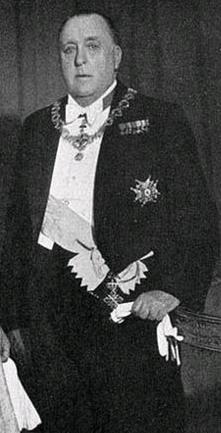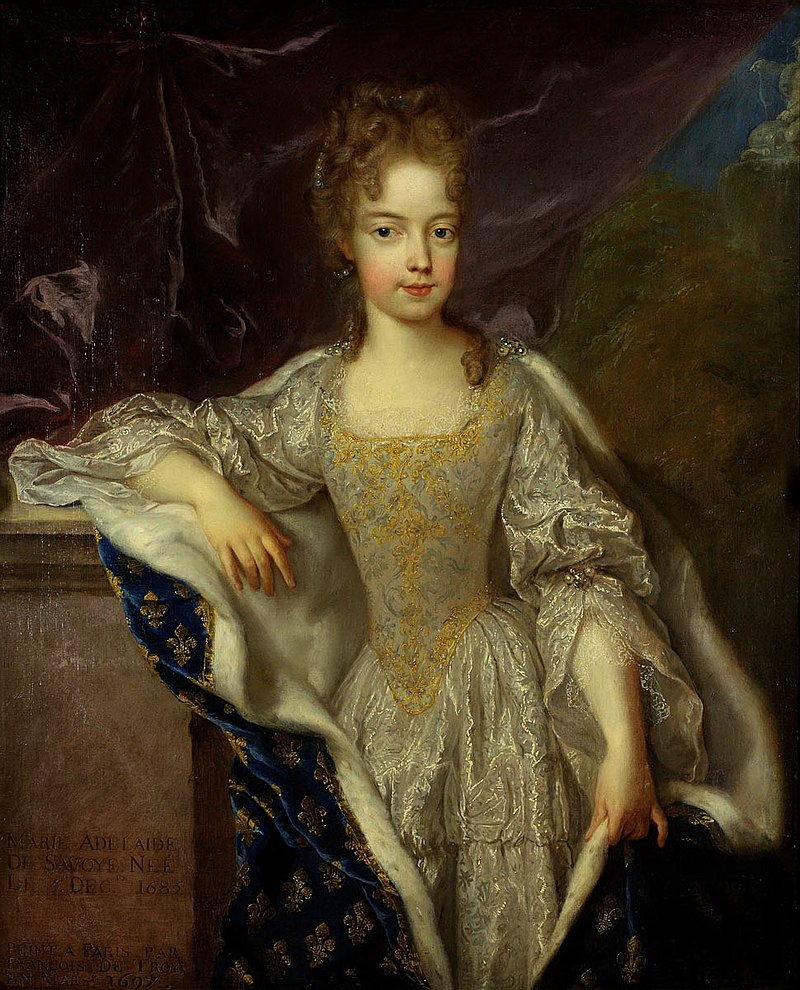by Susan Flantzer
© Unofficial Royalty 2023

Maria Josepha of Saxony, Dauphine of France; Credit – Wikipedia
Maria Josepha of Saxony was the second wife of Louis, Dauphin of France, the son and heir of King Louis XV of France, and the mother of three Kings of France, Louis XVI, Louis XVIII, and Charles X. Maria Josepha Karolina Eleonore Franziska Xaveria was born on November 4, 1731, at Dresden Castle in Dresden, Electorate of Saxony, later in the Kingdom of Saxony, now in the German state of Saxony. She was the eighth of the fourteen children and the fourth of the seven daughters of Augustus III, Elector of Saxony, King of Poland and Grand Duke of Lithuania and Maria Josepha of Austria. Her paternal grandparents were Augustus II, Elector of Saxony, King of Poland and Grand Duke of Lithuania and Christiane Eberhardine of Brandenburg-Bayreuth. Maria Josepha’s maternal grandparents were Joseph I, Holy Roman Emperor and Wilhelmina Amalia of Brunswick-Lüneburg. (articles coming soon)
Maria Josepha had thirteen siblings:
- Friedrich August of Saxony (1720 – 1721), died in infancy
- Joseph August of Saxony (1721 – 1728), died in childhood
- Friedrich Christian, Elector of Saxony (1722 – 1763), married Maria Antonia of Bavaria, had nine children
- Maria Amalia of Saxony, Queen of Spain (1724 – 1760), married King Carlos III of Spain, had thirteen children including King Carlos IV of Spain and King Ferdinando I of the Two Sicilies
- Maria Margaretha of Saxony (1727 – 1734), died in childhood
- Maria Anna of Saxony, Electress of Bavaria (1728 – 1797); married Maximilian III Joseph, Elector of Bavaria, no children
- Franz Xaver, Regent of Saxony (1730 – 1806), married morganatically Maria Chiara Spinucci, had ten children
- Karl Christian of Saxony, Duke of Courland and Zemgale (1733 – 1796), married morganatically Countess Franciszka Krasińska, had two children
- Maria Christina of Saxony, Princess-Abbess of Remiremont (1735 – 1782), unmarried, a secular canoness
- Maria Elisabeth of Saxony (1736 – 1818), unmarried
- Albert Kasimir of Saxony, Duke of Teschen and Governor of the Austrian Netherlands (1738 – 1822), married Maria Christina of Austria, Duchess of Teschen, Governor of the Austrian Netherlands, had one daughter who lived only one day
- Clemens Wenceslaus of Saxony, Archbishop-Elector of Trier (1739 – 1812), unmarried
- Maria Kunigunde of Saxony, Princess-Abbess of Thorn and Essen (1740 – 1826), unmarried, a secular canoness like her sister Maria Christina

Louis, Dauphin of France, son of King Louis XV, husband of Maria Josepha; Credit – Wikipedia
Louis, Dauphin of France was the elder son and heir apparent of his father Louis XV, King of France. In 1739, King Louis XV negotiated a marriage for his son Louis with Maria Teresa Rafaela, Infanta of Spain, daughter of Felipe V, King of Spain (who had been born Philippe of France, Duke of Anjou, a grandson of Louis XIV, King of France) and his second wife Elisabeth Farnese of Parma. The purpose of this marriage was to strengthen the alliance of Bourbon France and Bourbon Spain. Louis, Dauphin of France and Maria Teresa Rafaela, Infanta of Spain were married in 1745.
Louis and Maria Teresa Rafaela had one daughter Princess Marie Thérèse of France, born on July 19, 1746. Sadly, Maria Teresa Rafaela died three days later, on July 22, 1746, at the age of twenty. Louis’ sorrow was so intense that his father King Louis XV had to physically drag his son away from Maria Teresa Rafaela’s deathbed. Louis and Maria Teresa Rafaela’s daughter did not survive to her second birthday, dying on April 27, 1748.
Even though he grieved for his first wife, Louis knew he had to marry again to provide for the succession to the French throne. His first wife’s brother Fernando VI, King of Spain offered his youngest sister but Louis XV wanted to expand France’s diplomatic connections. France and Saxony had been on opposing sides in the recent War of the Austrian Succession (1740 -1748) and a marriage between a Princess of Saxony and the Dauphin of France would form a new alliance between the two countries. On January 10, 1747, fifteen-year-old Maria Josepha of Saxony was married by proxy to seventeen-year-old Louis, Dauphin of France. A second marriage ceremony took place in person at the Palace of Versailles on February 9, 1747. At the time of this marriage, Louis was still grieving for Maria Teresa Rafaela but Maria Josepha was patient and won his heart a little at a time.

Maria Josepha and her son Louis Joseph, Duke of Burgundy; Credit – Wikipedia
Maria Josepha and Louis had eight children including three Kings of France:
- Marie Zéphyrine of France (1750 – 1755), died in childhood
- Louis Joseph of France, Duke of Burgundy (1751 – 1761), died in childhood
- Xavier of France, Duke of Aquitaine (1753 – 1754), died in infancy
- Louis XVI, King of France (1754 – 1793), married Maria Antonia of Austria (Marie Antoinette), had four children, executed during the French Revolution
- Louis XVIII, King of France (1755 – 1824), married Marie Joséphine of Savoy, no children
- Charles X, King of France (1757 – 1836), married Marie Thérèse of Savoy, had four children
- Marie Clotilde of France, Queen of Sardinia (1759 – 1802), married Carlo Emanuele IV, King of Sardinia, no children
- Élisabeth of France (1764 – 1794), unmarried, executed during the French Revolution
The couple’s first child, a daughter, was born on the feast day of Saint Zephyrinus and named Marie Zéphyrine. The birth was greeted with much joy by her parents but her grandfather King Louis XV was disappointed the child was not a male. On August 30, 1755, five-year-old Marie Zéphyrine suffered convulsions and died on September 2, 1755. Maria Josepha and Louis’ second child Louis Joseph, Duke of Burgundy fell off a toy horse in 1759. He started limping and a tumor began to grow on his hip. This was operated on in 1760, but he never recovered the use of his legs. Louis Joseph was diagnosed with extrapulmonary tuberculosis of the bone which caused his death in 1761. The couple’s second son, Xavier, Duke of Aquitaine died after an epileptic seizure when he was five months old.
Maria Josepha’s husband Louis was a pious man, faithful to her, and concerned about the welfare and education of his children. Like her husband, Maria Josepha was very devout. Maria Josepha and Louis were a counterbalance to the behavior of King Louis XV, who had many mistresses and many illegitimate children, and his court. The couple was not fond of the various entertainments held at the Palace of Versailles every week and preferred to stay in their apartments. Kept away from government affairs by his father, Louis was at the center of the Dévots, a group of religiously-minded men who hoped to gain power when he succeeded to the throne.

Allegory on the Death of the Dauphin by Louis-Jean-François Lagrenée, 1765; Credit – Wikipedia
However, Maria Josepha’s husband Louis never succeeded to the throne. He died of tuberculosis at the Château de Fontainebleau in France on December 20, 1765, at the age of 36. According to Louis’ last wishes, he was buried at the Cathedral of Saint-Étienne in Sens, France, and his heart was buried at the Basilica of Saint-Denis, near the grave of his first wife. Maria Josepha, who had cared for Louis during his last illness, also contracted tuberculosis. She died at the Palace of Versailles, on March 13, 1767, at the age of 35, and was buried with her husband.
When King Louis XV died of smallpox at the Palace of Versailles on May 10, 1774, he was succeeded by his grandson, King Louis XVI, the third but the eldest surviving son of Maria Josepha and her husband. During the French Revolution (1789 – 1799), King Louis XVI and his wife Marie Antoinette were beheaded as was Louis XVI’s youngest sister Elisabeth. Louis XVI’s two younger brothers escaped France and survived the French Revolution. Both reigned as Kings of France during the Bourbon Restoration (1814 – 1830).

Louis and Maria Josepha’s restored tomb; Credit – Par Aubry Gérard — Travail personnel, CC BY-SA 4.0, https://commons.wikimedia.org/w/index.php?curid=42182840
In March 1794, during the French Revolution, Louis and Maria Josepha’s tomb was desecrated and their remains were thrown into a mass grave. After the Bourbon Restoration, on the orders of Louis and Maria Josepha’s son King Louis XVIII, their remains were found, their tomb was restored, and they were reinterred at the Cathedral of Saint-Étienne in Sens, France on December 8, 1814.
This article is the intellectual property of Unofficial Royalty and is NOT TO BE COPIED, EDITED, OR POSTED IN ANY FORM ON ANOTHER WEBSITE under any circumstances. It is permissible to use a link that directs to Unofficial Royalty.
Works Cited
- Augustus III of Poland (2023) Wikipedia. Available at: https://en.wikipedia.org/wiki/Augustus_III_of_Poland (Accessed: 13 June 2023).
- Flantzer, Susan. (2019) Louis, Dauphin of France, Unofficial Royalty. Available at: https://www.unofficialroyalty.com/louis-dauphin-of-france/ (Accessed: 13 June 2023).
- Maria Josepha of Saxony, Dauphine of France (2023) Wikipedia. Available at: https://en.wikipedia.org/wiki/Maria_Josepha_of_Saxony,_Dauphine_of_France (Accessed: 13 June 2023).
- Maria Josepha von Sachsen (1731–1767) (2023) Wikipedia (German). Available at: https://de.wikipedia.org/wiki/Maria_Josepha_von_Sachsen_(1731%E2%80%931767) (Accessed: 13 June 2023).
- Marie-Josèphe de Saxe (1731-1767) (2023) Wikipedia (French). Available at: https://fr.wikipedia.org/wiki/Marie-Jos%C3%A8phe_de_Saxe_(1731-1767) (Accessed: 13 June 2023).































